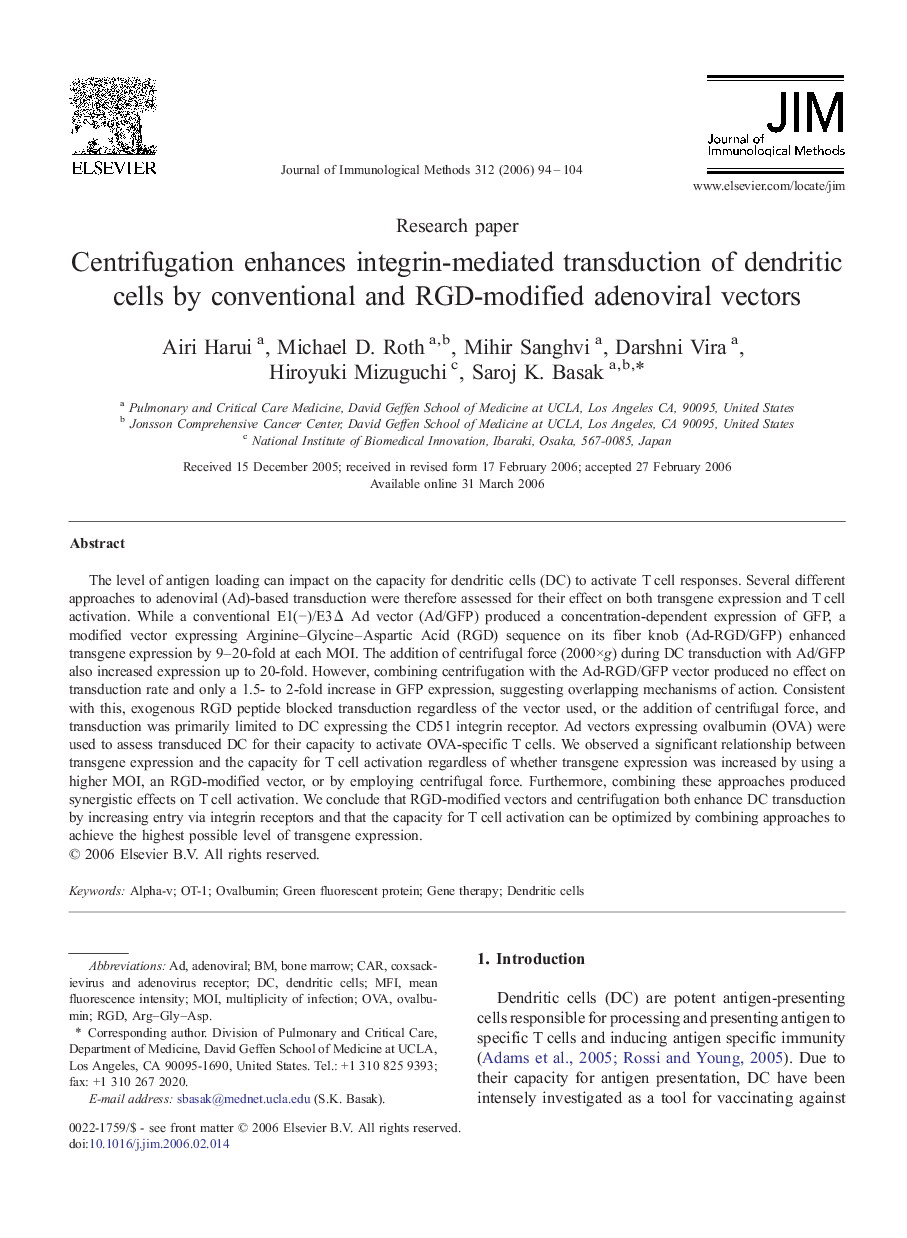| Article ID | Journal | Published Year | Pages | File Type |
|---|---|---|---|---|
| 2089585 | Journal of Immunological Methods | 2006 | 11 Pages |
The level of antigen loading can impact on the capacity for dendritic cells (DC) to activate T cell responses. Several different approaches to adenoviral (Ad)-based transduction were therefore assessed for their effect on both transgene expression and T cell activation. While a conventional E1(−)/E3Δ Ad vector (Ad/GFP) produced a concentration-dependent expression of GFP, a modified vector expressing Arginine–Glycine–Aspartic Acid (RGD) sequence on its fiber knob (Ad-RGD/GFP) enhanced transgene expression by 9–20-fold at each MOI. The addition of centrifugal force (2000×g) during DC transduction with Ad/GFP also increased expression up to 20-fold. However, combining centrifugation with the Ad-RGD/GFP vector produced no effect on transduction rate and only a 1.5- to 2-fold increase in GFP expression, suggesting overlapping mechanisms of action. Consistent with this, exogenous RGD peptide blocked transduction regardless of the vector used, or the addition of centrifugal force, and transduction was primarily limited to DC expressing the CD51 integrin receptor. Ad vectors expressing ovalbumin (OVA) were used to assess transduced DC for their capacity to activate OVA-specific T cells. We observed a significant relationship between transgene expression and the capacity for T cell activation regardless of whether transgene expression was increased by using a higher MOI, an RGD-modified vector, or by employing centrifugal force. Furthermore, combining these approaches produced synergistic effects on T cell activation. We conclude that RGD-modified vectors and centrifugation both enhance DC transduction by increasing entry via integrin receptors and that the capacity for T cell activation can be optimized by combining approaches to achieve the highest possible level of transgene expression.
